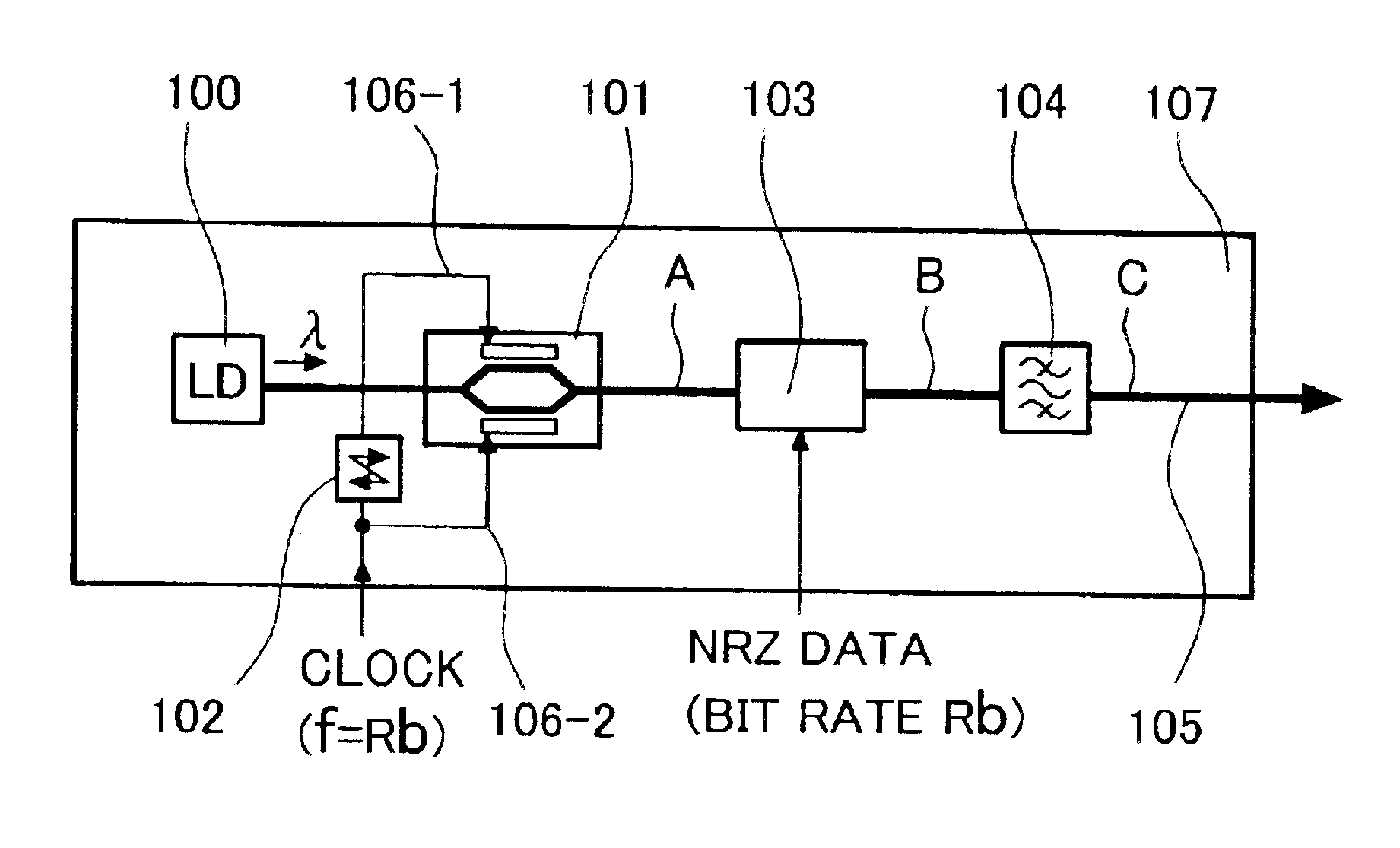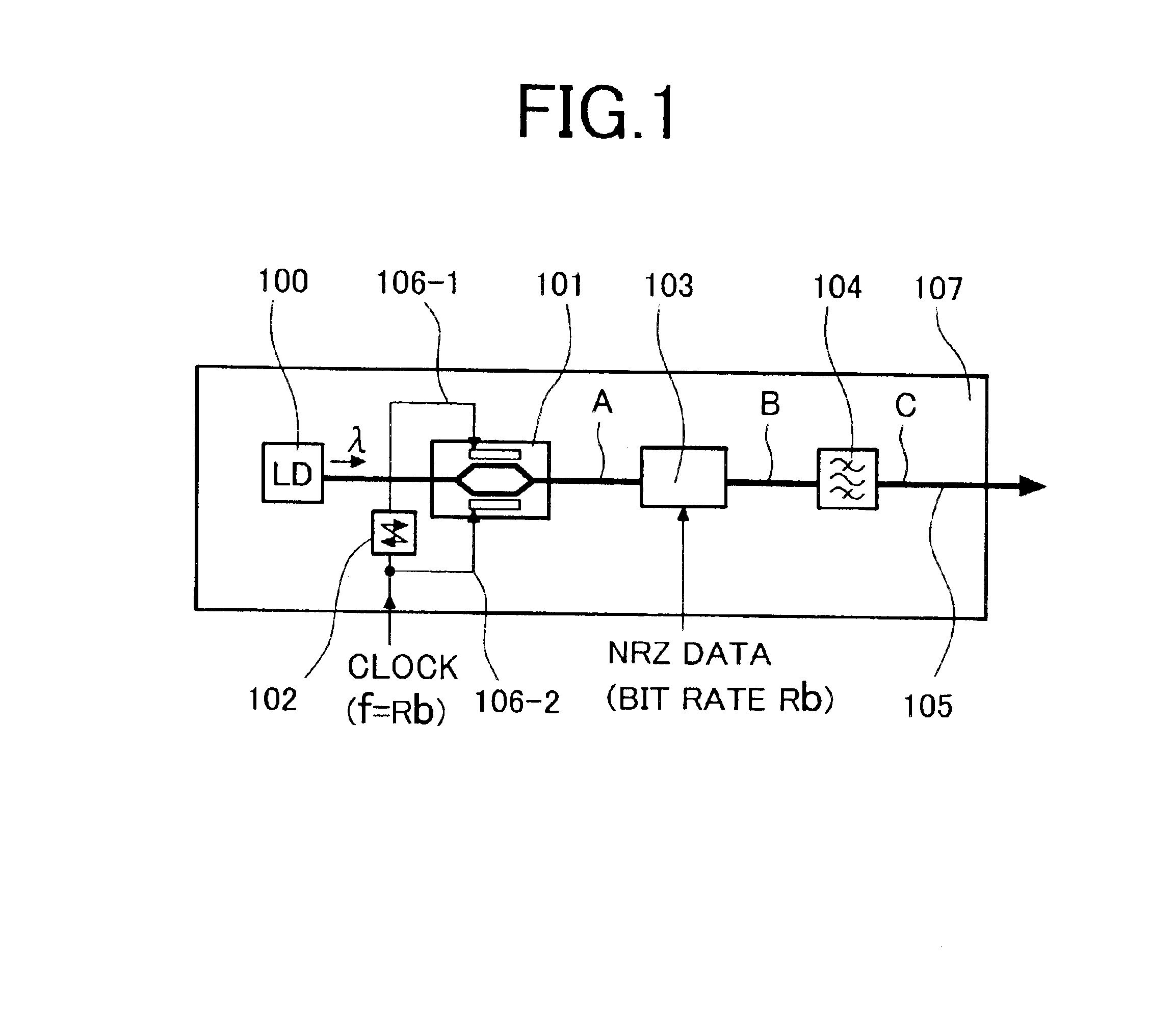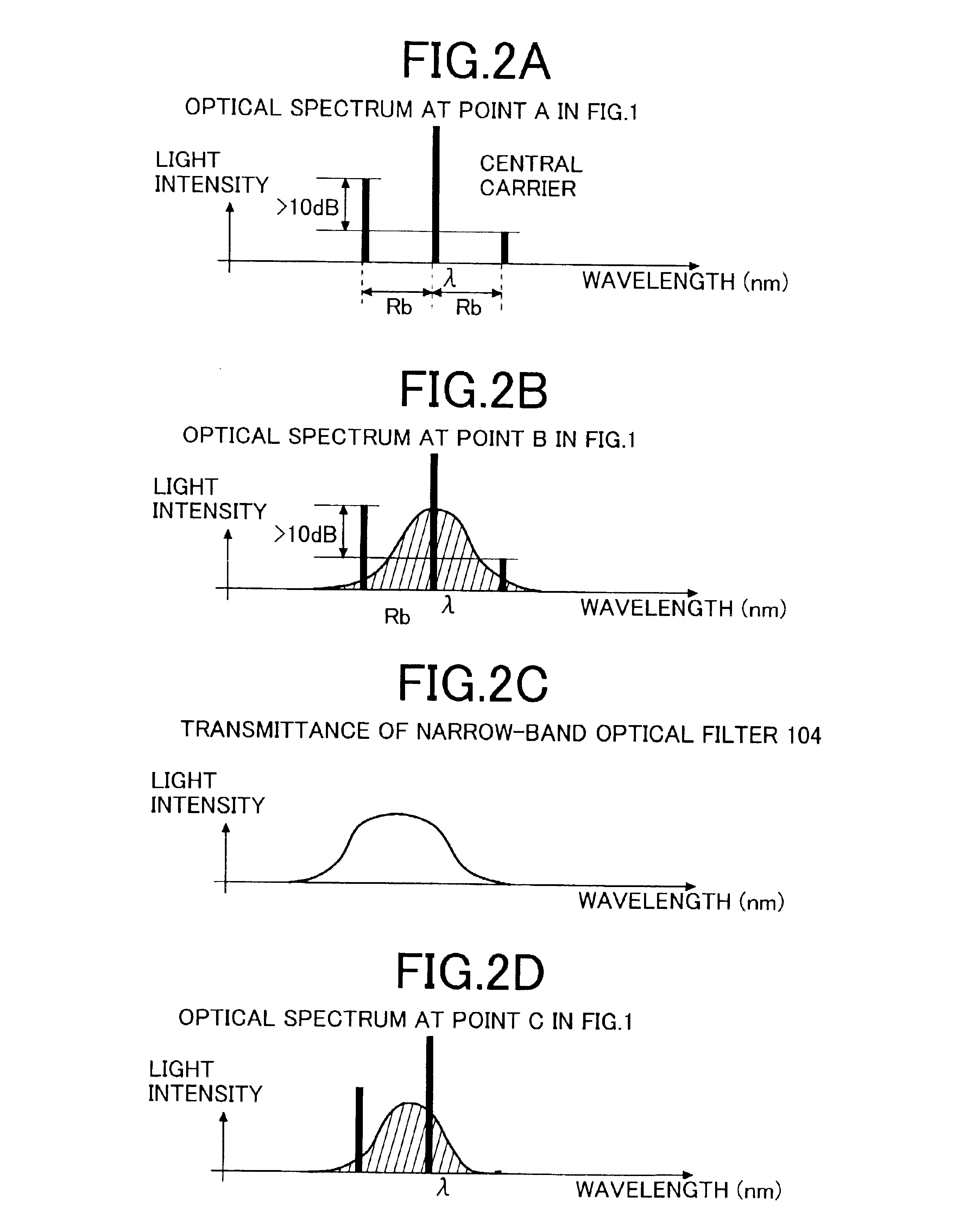Optical single sideband transmitter
a transmitter and optical technology, applied in the field of optical single sideband transmitters, can solve the problems of deteriorating optical amplifier performance, reducing pumping efficiency, and increasing costs, so as to prevent the transmitter from becoming complicated and expensive, and not implement a hilbert transform circuit with eas
- Summary
- Abstract
- Description
- Claims
- Application Information
AI Technical Summary
Benefits of technology
Problems solved by technology
Method used
Image
Examples
Embodiment Construction
FIG. 1 is a schematic diagram that shows a first preferred embodiment of the present invention. It illustrates the structure of an optical single sideband transmitter in accordance with the present invention. When the structure of the first preferred embodiment is used, the light output (wavelength: λ) from a laser source 100 is applied to a dual-arm drive Mach-Zehnder optical modulator 101, and the light output thereof is supplied to an NRZ optical modulator 103. A sine wave clock signal (frequency: Rb and equal to the bit rate) within an electrical region is branched into two drive signals 106-1, 106-2 and applied to the two electrodes of the dual-arm drive Mach-Zehnder optical modulator 101. A DC bias component is applied to these two drive signals so as to produce an intensity modulation with their resulting amplitudes equalized. Further, these drive signals are rendered 90 degrees out of phase from each other by a phase shifter 102 (delay line). As a result, the laser light is ...
PUM
 Login to View More
Login to View More Abstract
Description
Claims
Application Information
 Login to View More
Login to View More - R&D
- Intellectual Property
- Life Sciences
- Materials
- Tech Scout
- Unparalleled Data Quality
- Higher Quality Content
- 60% Fewer Hallucinations
Browse by: Latest US Patents, China's latest patents, Technical Efficacy Thesaurus, Application Domain, Technology Topic, Popular Technical Reports.
© 2025 PatSnap. All rights reserved.Legal|Privacy policy|Modern Slavery Act Transparency Statement|Sitemap|About US| Contact US: help@patsnap.com



